When it comes to choosing a showerhead, many people only consider its appearance and price, neglecting some crucial details. Due to a lack of understanding, I had to replace my showerhead three times before realizing that buying this fixture requires following the “Eight Don’ts” rule.
1. Don’t buy a black showerhead
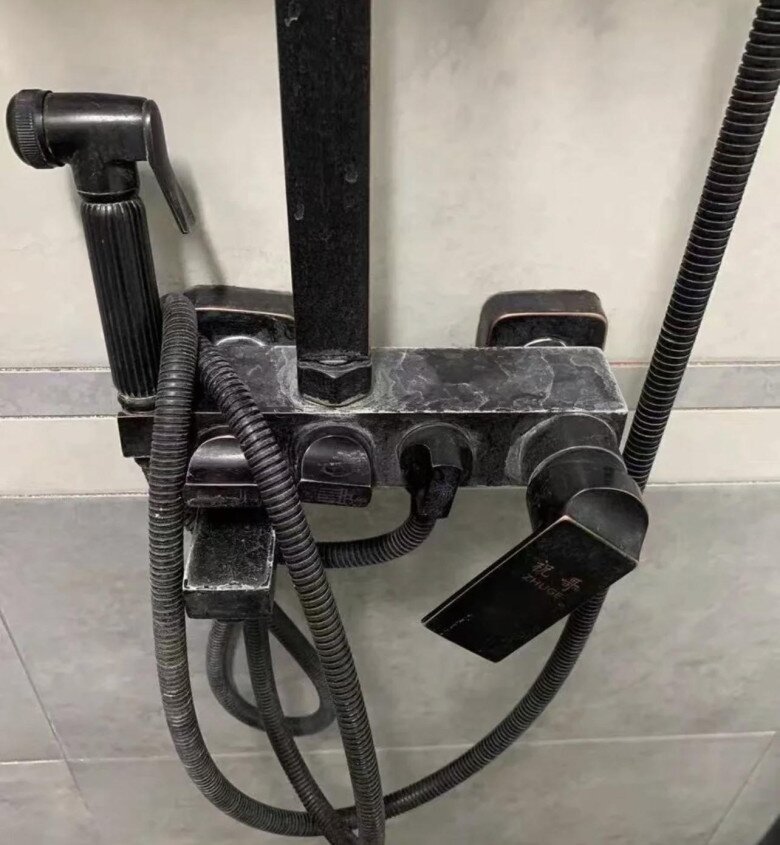
The color of a showerhead not only affects the aesthetics of your bathroom but also has a direct impact on your daily cleaning and maintenance routine.
While a black showerhead may look sleek and sophisticated initially, over time, the minerals present in the water will leave their mark, forming water stains that demand more frequent cleaning.
On the other hand, white or gray showerheads are better at resisting dirt and stains, especially a smooth and glossy gray surface that can be easily wiped clean.
Moreover, many black showerheads are made by painting the surface. This paint tends to peel off over time. In contrast, gray showerheads are often created using an electroplating process, which provides strong corrosion resistance, and paint peeling is essentially impossible.
2. Don’t choose a showerhead with a plastic water outlet
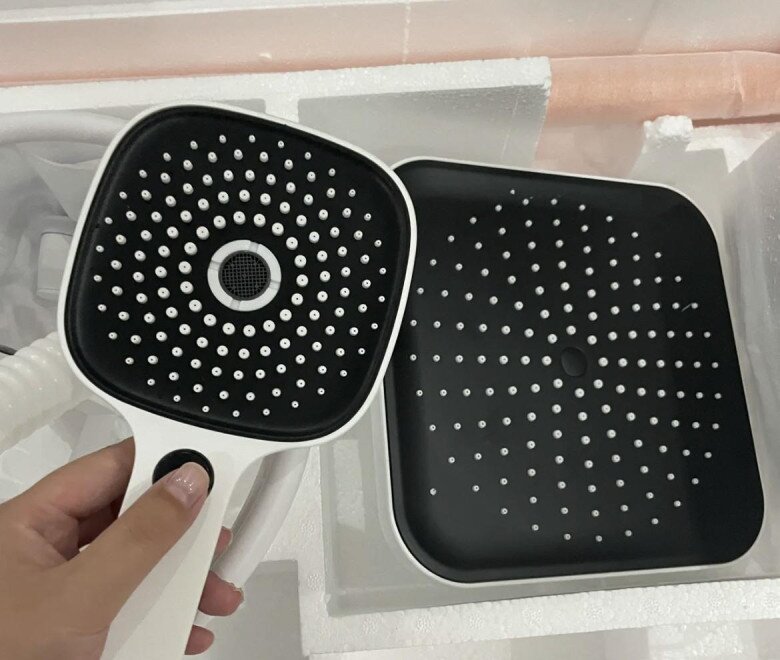
Silicone water outlet.
The water outlet is one of the most critical parts of a showerhead, as its quality directly affects your showering experience. There are two main types of materials used for water outlets on the market: plastic and silicone.
Many people opt for plastic outlets because they are cheaper and more aesthetically pleasing. However, one significant drawback of plastic water outlets is their tendency to accumulate dirt and grime, making them challenging to clean manually. Prolonged use may result in reduced water flow or even blockage.
In contrast, silicone water outlets are much easier to clean. The surface of a silicone water outlet features numerous tiny holes. With a gentle press, these holes can expel trapped dirt and grime, keeping the outlet clean.
Additionally, silicone is soft and flexible, making it less prone to breakage, and it generally has a longer lifespan.
3. Don’t choose a showerhead without an integrated filter
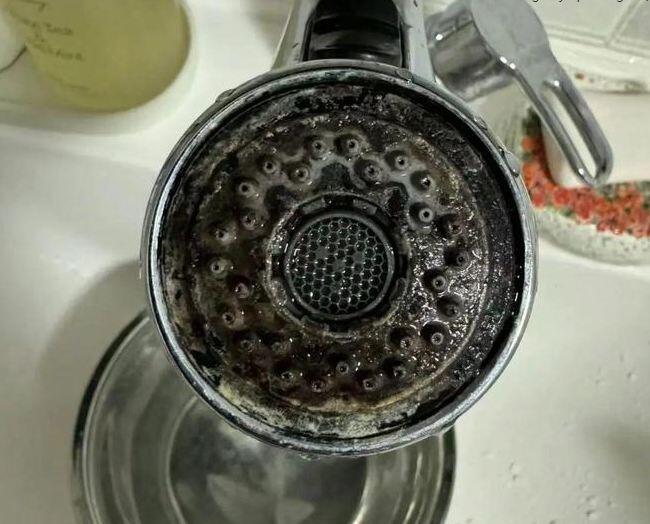
During the treatment and transportation process, tap water may contain various impurities such as excess chlorine, sediment, organic matter, algae, rust, etc. These contaminants can cause allergies and other issues for users, especially those with sensitive skin.
Choosing a showerhead with an integrated filtering function can effectively remove these impurities, thereby reducing their potential harm to our bodies.
Moreover, showerheads without this filtering function cannot remove these impurities, and their water outlets are more prone to clogging. In contrast, showerheads with integrated filters can effectively reduce scale buildup, prolonging the lifespan of the showerhead.
What’s more, the filter components of showerheads with this function are replaceable.
4. Don’t choose a small-aperture pressure-increasing showerhead
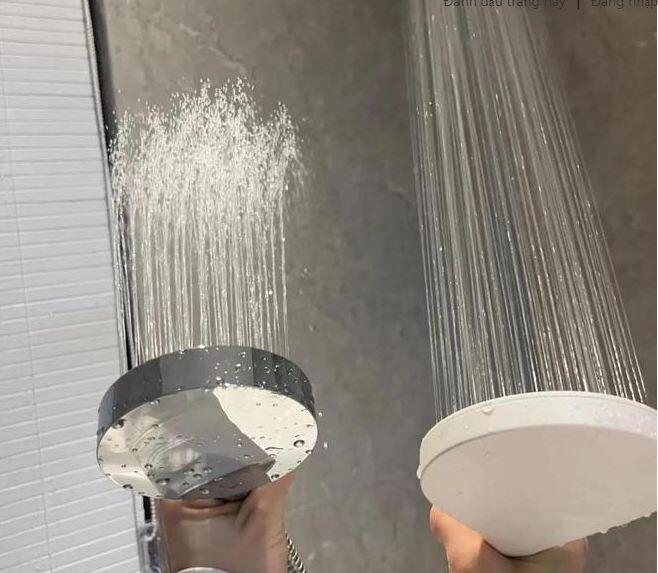
Left: Small-aperture pressure-increasing showerhead; Right: Air-injected type.
While many people desire a high-pressure shower, it’s essential to choose between a small-aperture or an air-injected type. Small-aperture pressure-increasing showerheads work by reducing the size of the water outlet, thereby increasing water speed and creating a pressure-boosting effect. However, this high-pressure water stream can feel like pinpricks on the skin, lacking gentleness.
Air-injected pressure-increasing showerheads, on the other hand, feature a unique internal structure, such as a water turbine or air-mixing chamber. They utilize the momentum of the water flow to draw in air, creating a mixture of water and air that increases volume and speed, resulting in a pressure-boosting effect.
This type of showerhead delivers a gentler and more uniform water flow, providing a soothing sensation similar to a natural spring rain.
5. Don’t choose a slider shower
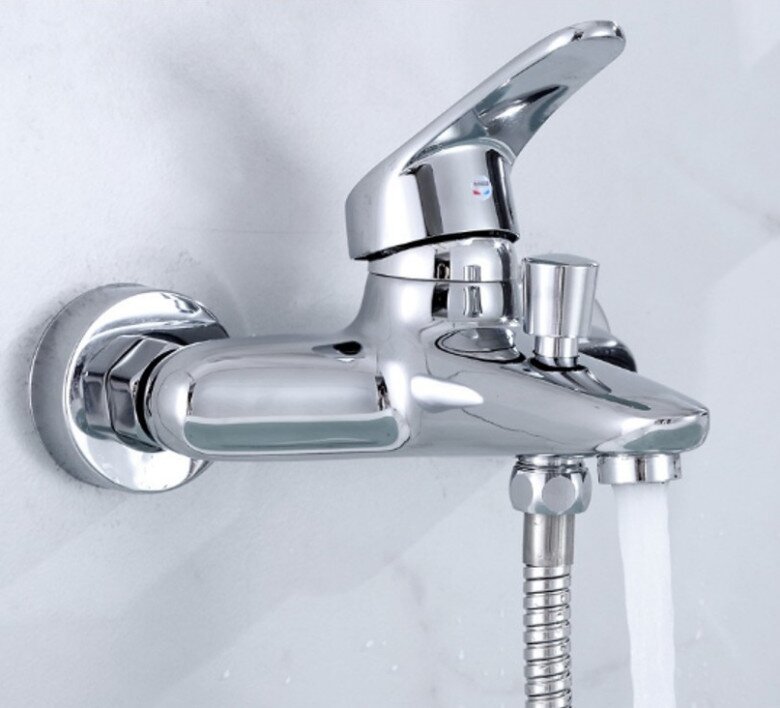
Slider shower.
Slider showers may appear simple and elegant, but they come with several drawbacks. Firstly, they offer limited control over water temperature, often resulting in water that is too hot or too cold. Secondly, the slider mechanism is fragile and prone to breakage, leading to a shorter lifespan.
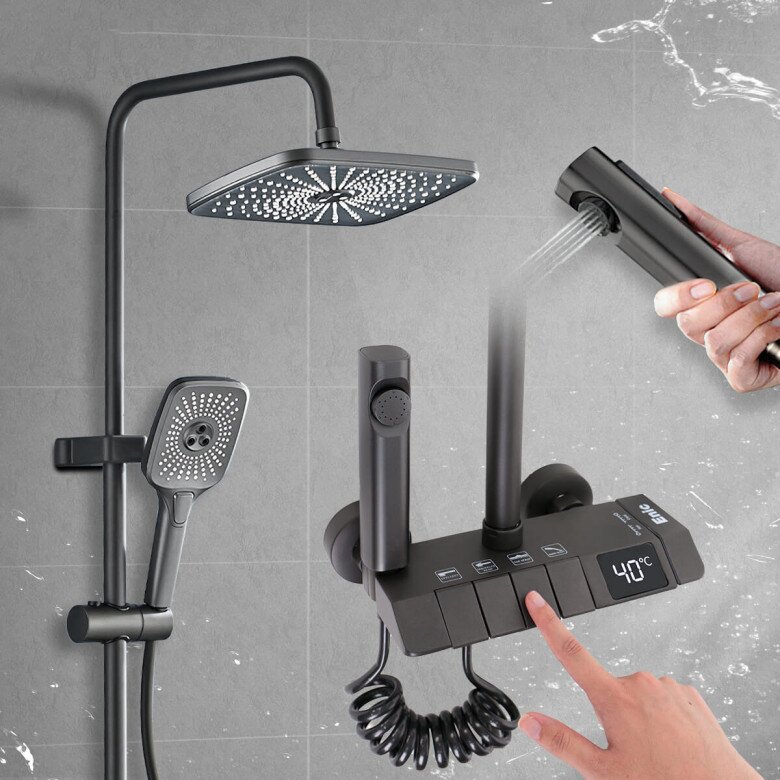
Piano key shower.
A piano key shower is a more practical choice. It allows you to adjust the shower modes and lock the water temperature, making your showering experience more comfortable and convenient.
Additionally, the piano key design adds a stylish and fashionable touch to your bathroom, making it look more modern and luxurious. It is also easy to operate and less prone to malfunction.
6. Don’t choose a coiled water pipe
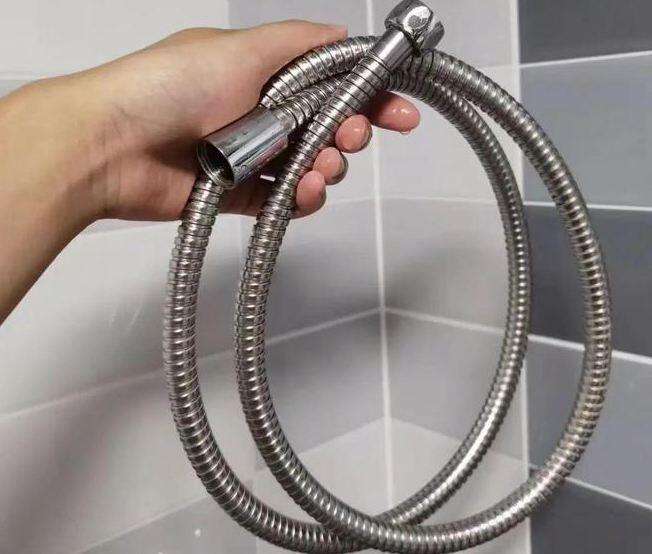
When selecting a water pipe for your showerhead, you may come across coiled pipes. While they may seem like a good option, they present several issues.
Firstly, it is challenging to clean the water marks inside the coils. Over time, these pipes turn black and become impossible to keep clean.
Secondly, coiled pipes tend to tangle, making them frustrating to use. In comparison, ABS pipes (plastic-coated steel pipes) are a better choice.
ABS pipes offer excellent flexibility and are less likely to get tangled. Their smooth surface resists water marks, and they can be bent as desired, making it easier to adjust the position of your showerhead.
Additionally, ABS pipes have a longer lifespan, are less prone to breakage, and are less likely to leak.
7. Don’t choose an inferior valve core
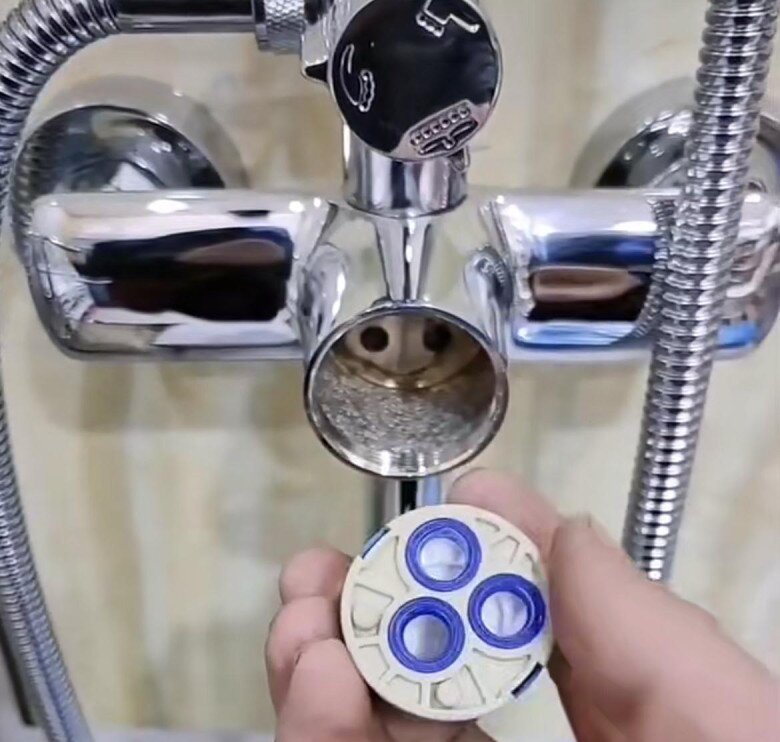
The valve core, located inside the switch, is the very heart of the showerhead. It controls the hot and cold water, pressure, and other functions of the showerhead and directly determines its lifespan. If your showerhead is dripping or won’t turn off, it’s likely due to a degraded valve core.
Therefore, its quality is of utmost importance. The current ranking of valve cores in the market is: ceramic valve core > brass valve core > stainless steel valve core. Ceramic valve cores are highly durable, heat-resistant, anti-aging, rust-resistant, provide excellent sealing, and have a long lifespan.
Brass valve cores are also durable and resistant to wear and tear, but ensure that it’s made of pure brass. While high-quality stainless steel valve cores can be excellent, many manufacturers opt for inferior, corrosive ones to cut costs, leading to water contamination and a shorter lifespan.
Moreover, the price difference between these three types is not significant. Therefore, it’s best to avoid choosing a stainless steel valve core.
8. Don’t choose a side-mounted showerhead
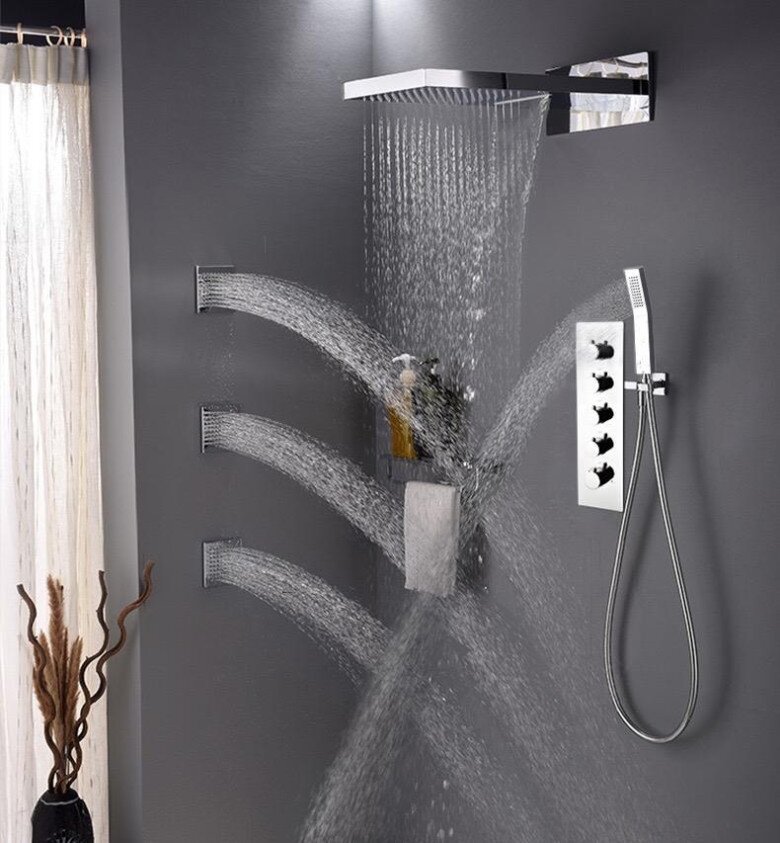
The downside of side-mounted showerheads is the difficulty of installation, as they are attached to the wall. Subsequent replacement and repair can be troublesome. Instead, opt for a standard handheld showerhead or a combination of a handheld and an overhead showerhead. If you choose a single handheld showerhead, go for a larger size.







































